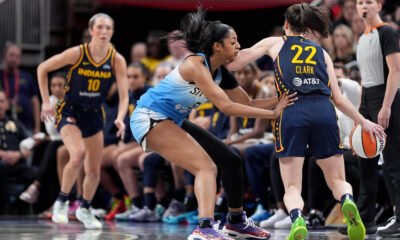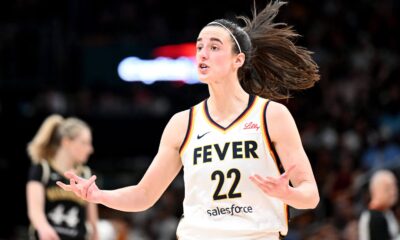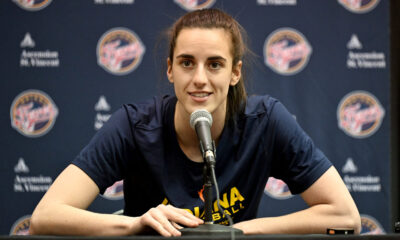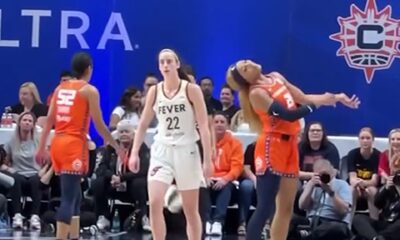Sports
What could Iowa’s Caitlin Clark’s WNBA transition look like?
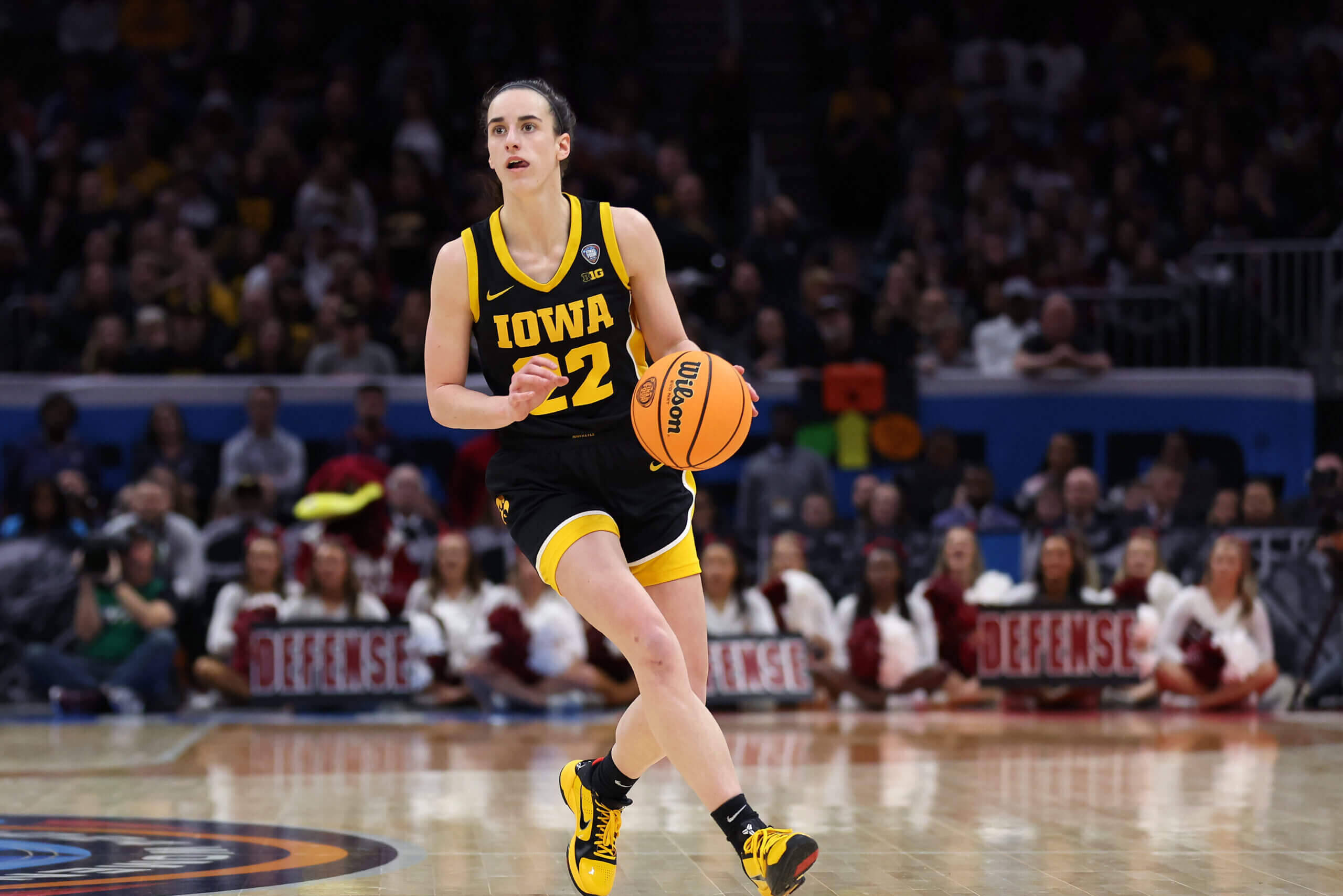
Reality comes.
In the words of Diana Taurasi, as spoken to Scott Van Pelt on SportsCenter, Caitlin Clark faces a reckoning if she joins the WNBA. After four years of dominating the college game, Clark begins the next chapter of her career at the bottom as one of the youngest players in the most talented league in the world. No matter how Clark’s career turns out, it’s unlikely she’ll come off the floor as the best player on the court every night like she did at Iowa.
Diana Taurasi on Caitlin Clark Coming to WNBA “Reality is setting in… you look superhuman playing against 18 year olds, but you’re going to come play with some grown women who have been playing professional basketball for a long time” pic.twitter.com/fxBxGoRZCS
— Gifdsports (@gifdsports) April 6, 2024
Hype won’t be a problem for Clark; she is used to feeling pressure and meeting the moment. She was a top-five recruit coming out of high school and eventually becoming the leading scorer in college basketball history. She declared her goal as a freshman to return Iowa to the Final Four for the first time since 1993, and she did it twice. With the crowd’s eyes on her during each successive game of the Hawkeyes’ 2024 NCAA tournament, Clark continued to win, breaking viewership records in the process.
She has been the center of attention before. The only difference now that Clark is willing to become the Indiana Fever’s No. 1 pick is that the players she’s going up against can do something about it.
“It’s a different game, there’s an adjustment period, there’s a grace period that you have to give rookies when they reach the league,” Taurasi said during the USA Basketball training camp in Cleveland. “We’ve had some of the greats to ever play basketball, and it takes two or three years to get used to playing another game (against) the best players in the world.”
The biggest change Clark will see in the WNBA is the physicality and strength of her opposition. We saw Clark struggle against West Virginia’s aggressive ball pressure during the NCAA Tournament, posting her worst assist-to-turnover ratio (3 to 6) of the season. UConn’s Nika Mühl had her in a straightjacket during the Final Four, putting Clark on the full court and limiting Clark to her lowest scoring total (21 points) of 2023-2024. And South Carolina’s trees made it a challenge for Clark to finish inside, as she missed 10 two-pointers.
Nika Muhl follows Caitlin Clark everywhere she goes pic.twitter.com/aur7s8INm7
— Alex 👋 (@Dubs408) April 6, 2024
That’s the kind of defense Clark can expect to see every night in the WNBA, starting with Gamecocks alumni Tiffany Mitchell and Tyasha Harris in Indiana’s opener against Connecticut. Furthermore, while Clark had to hide in the Hawkeyes’ defense and defer the toughest games to Gabbie Marshall, too many offensive threats exist for any team in the pros. There will be opponents trying to take her off the dribble and get into her body on that end as well.
“As far as challenges go, I think the physical competition against adult women will be difficult,” Andraya Carter said on the WNBA’s preliminary Zoom call. “The blows will be a little harder. Controls will become stricter. The defense will be more physical and the players will be faster.”
The jump to the pros is often more challenging for top guards. Of the nine rookies to place in WARP’s top 10 (wins above replacement) since 2010, only Maya Moore was a perimeter player, according to ESPN.com. And Clark’s playing doesn’t exactly resemble that of her childhood idol.
Former No. 1 picks Kelsey Plum and Sabrina Ionescu each experienced serious growing pains during their climb to All-Star status. Plum didn’t average double figures until her fourth season, a somewhat shocking turn of events for the then-leading scorer in Division I women’s college history. Likewise, Ionescu didn’t make more than 35 percent of her three-pointers until her fourth season, despite converting 42.2 percent of such looks in college.
Nevertheless, Clark has a few advantages going for her over that pair. At 6 feet tall, she is taller than Plum, which immediately gives her cleaner shooting angles. Opponents may not be able to immediately put their best defender on Clark, as All-Star Kelsey Mitchell is also in the Fever backcourt, and Clark has greater range than Plum at this stage, allowing her to outpace the defense to expand.
Ionescu battled a severe ankle sprain through her first two seasons, so health could be Clark’s biggest differentiator early in her career. But Ionescu’s difficulty playing as lead ballhandler is instructive; despite being the all-time college leader in triple-doubles, she only flourished in the pros alongside another point guard. Clark will play one; as such, her death will have to shine right away. Luckily, that might be the most professional skill in her toolbox.
“There will be challenges, but at the same time the talent around her will also improve,” Rebecca Lobo said during the pre-draft call. “I’m curious to see what that looks like especially on the offensive side of the floor.”
Perhaps a more useful comparison for Clark is Rhyne Howard, the No. 1 pick in 2022. Howard was a big 3-point shooter at Kentucky and succeeded as a scorer as a rookie because she continued to launch from distance, earning All-Star. honor in her first season. Howard didn’t create too many shots for others — she’s more of a wing than Clark — but used her size to stack up against smaller guards, something her fellow No. 1 can replicate.
Clark’s deep repertoire of skills, whether shooting the catch, creating for others or generating good looks for herself, makes it likely that she can be confident that any of those skills will make her mark immediately. She is in a better position to succeed than those who have come before her in recent years because her resume is in a league of its own.
Even if reality hits right away, there’s still a long road ahead for Clark to figure out how to dominate at the next level. She is being groomed for success by a franchise that will prioritize her development and optimize her basketball situation. Sooner or later, everyone agrees that Clark’s game will translate, even Taurasi.
“If you’re good at what you do,” Taurasi said, “you’ll only get better.”
(Photo: Steph Chambers/Getty Images)





